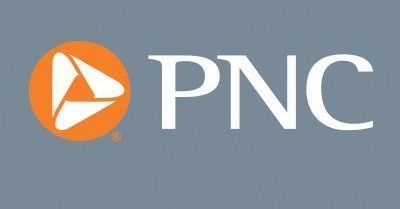 Topline +0.2%, Core +0.3%
Topline +0.2%, Core +0.3%
- Core CPI, less Food & Energy, rose 0.3% in October 2024, its third consecutive monthly gain at that pace
- Topline CPI rose by 0.2% in October 2024 in seasonally-adjusted terms, up marginally from September
- Housing inflation was resurgent in October 2024, rising at a 4.6% annualized pace
- Consumer necessities enjoyed a break in October 2024 with Food & Beverage price growth easing and Gasoline prices down 0.9% on the month
Consumer Price Index (CPI) inflation came in at PNC’s expectations for October 2024 for both the Core measure and the topline result. Core CPI inflation, which mirrors the metric that the Federal Reserve targets in its monetary policy impact goals (the Core Personal Consumption Expenditures Deflator), rose by 0.3% for the month, matching price growth seen for this metric in both August and September. Not excluding these critical household expenditures, the topline measure rose by 0.2% in October as Energy prices fell for a third consecutive month.
The +0.3% Core CPI gain in October 2024, which excludes volatile food and energy inputs, leaves this indicator of Fed monetary policy direction stalled at a +3.3% year-over-year pace of gain. After re-accelerating to an annualized growth rate of more than 4% in early 2024 and then briefly dipped to below the Fed’s goal of 2% mid-year, Core inflation re-established a beachhead at an average annualized rate of 3.6% from August now through October. This persistence will stand as a concerning development for those looking for the Fed to maintain an unbroken pace of rate cuts toward a neutral monetary policy stance by mid-2025.
A positive ongoing development for household finances is that aggregate wage growth across private sector employment, according to Bureau of Labor Statistics data, is nearing parity with total inflation since August 2021. As of the October 2024 CPI inflation report, total CPI gains have outpaced average wage growth by only 0.4 percentage points. This is down from the more than two (2) percentage point dent to spending power that inflation had retained even through late 2023. Still-strong wage growth is a limiting factor for new hiring and business growth prospects entering 2025. But households should begin to realize that the damage inflicted on living standards over the past three years is being repaired and as a result consumer spending will have the capacity to rebuild momentum and support organic business expansion over the near-term horizon.
Consumer confidence plays a significant role in driving spending in the U.S. economy, and inflation across household necessities should be providing support on that front. Food & Beverage inflation came in at a monthly gain of 0.2% for October 2024. This is down from September’s 0.4% - which itself was the strongest result since October 2022 (+0.7%). October’s monthly gain translates to a year-over-year pace of +2.1% for Food & Beverage inflation, which is where this category has trended since March. Food at Home prices continue to rise at a mere 1.1% year-over-year pace, while Food Away from Home inflation fell to +3.8% in October 2024 – the first time this category has seen back to back months of sub-4% inflation since April 2021, when much of the U.S. restaurant industry was still suffering from government mandated operating restrictions.
Also providing support for consumer confidence should be a downward trend in the pace of Energy inflation, and specifically falling Gasoline prices. The October 2024 CPI report saw Gasoline prices down by 0.9% versus the month prior, helping to bring the broader Energy category down by 0.02% for the month. Gasoline prices are now 12% below where they were one year ago.
The Federal Reserve’s data dependent stance should take the October 2024 CPI report as an indication that a steady path toward lower interest rates for the U.S. economy is appropriate, as compared to calls for more aggressive monetary policy loosening that had bullied their way into the conversation following the Fed’s 50 basis points cut in September. Markets began pricing in less easing after the results of the U.S. Presidential election, but perhaps doing so from overly frothy expectations – or hopes – to begin with. PNC is forecasting that the Fed will feed a steady diet of rate cuts to the U.S. economy through mid-2025, pushing the Fed Funds rate down to a target range of 3.25-3.50%. Inflation will continue to drift toward the Fed’s goal of a 2% average during this process while labor markets loosen and the balance of spending power is reset, enabling the next U.S. economic upswing to launch from a position of broad stability.
The PNC Financial Services Group, Inc. is one of the largest diversified financial services institutions in the United States, organized around its customers and communities for strong relationships and local delivery of retail and business banking including a full range of lending products; specialized services for corporations and government entities, including corporate banking, real estate finance and asset-based lending; wealth management and asset management. For information about PNC, visit www.pnc.com.














